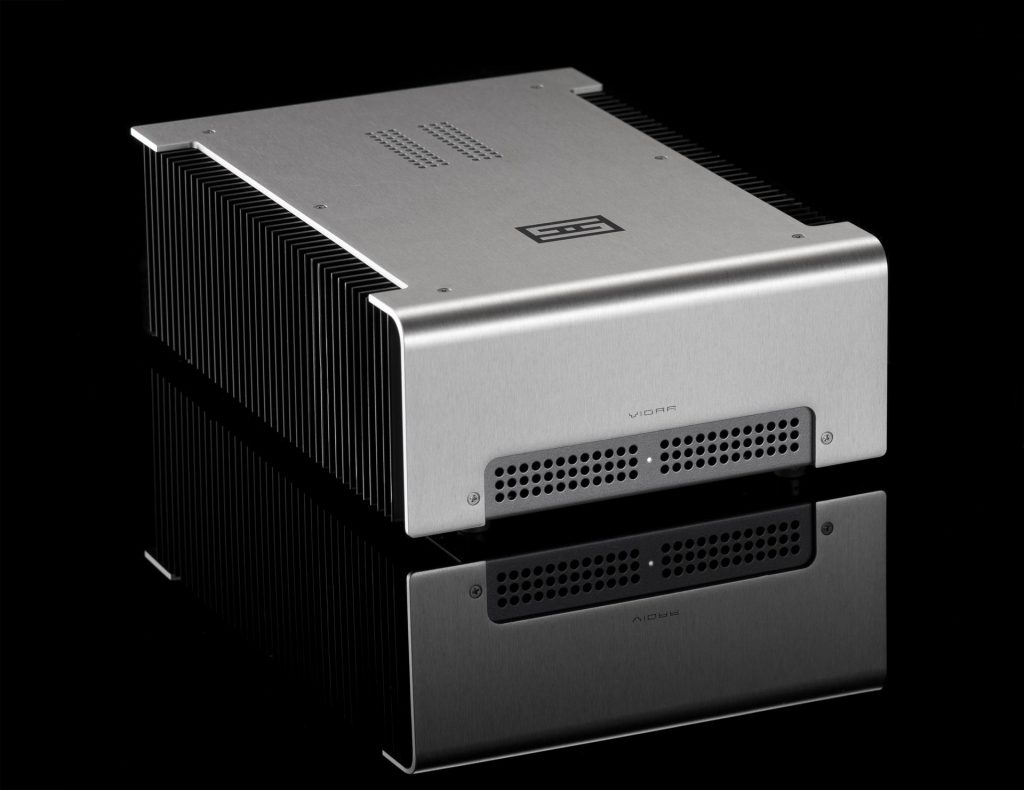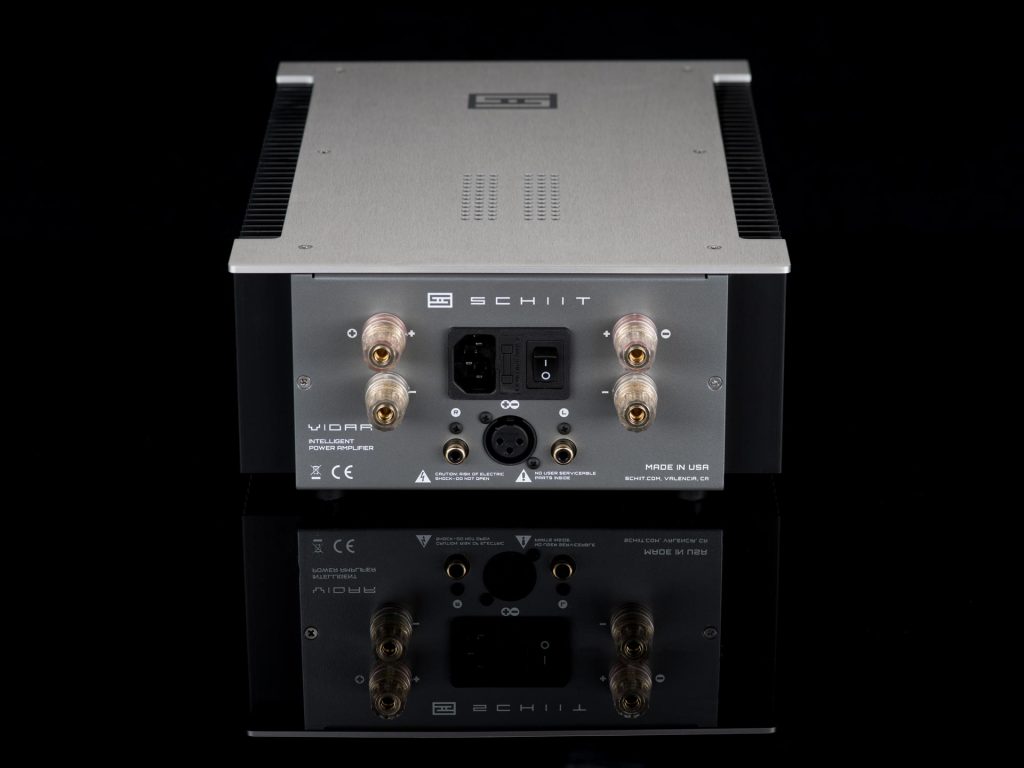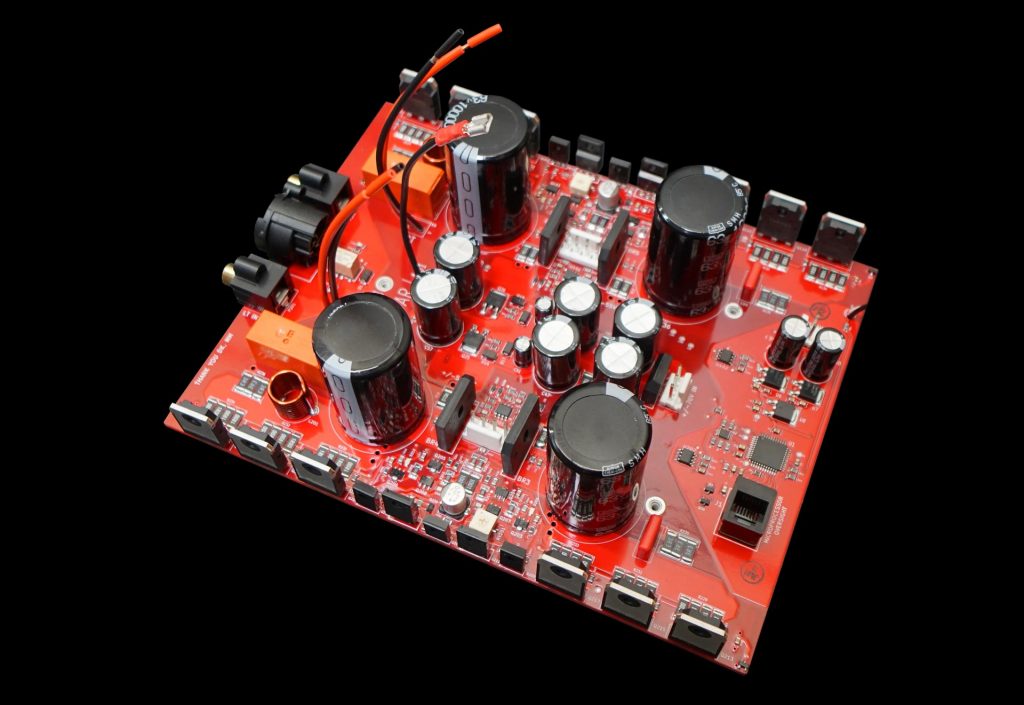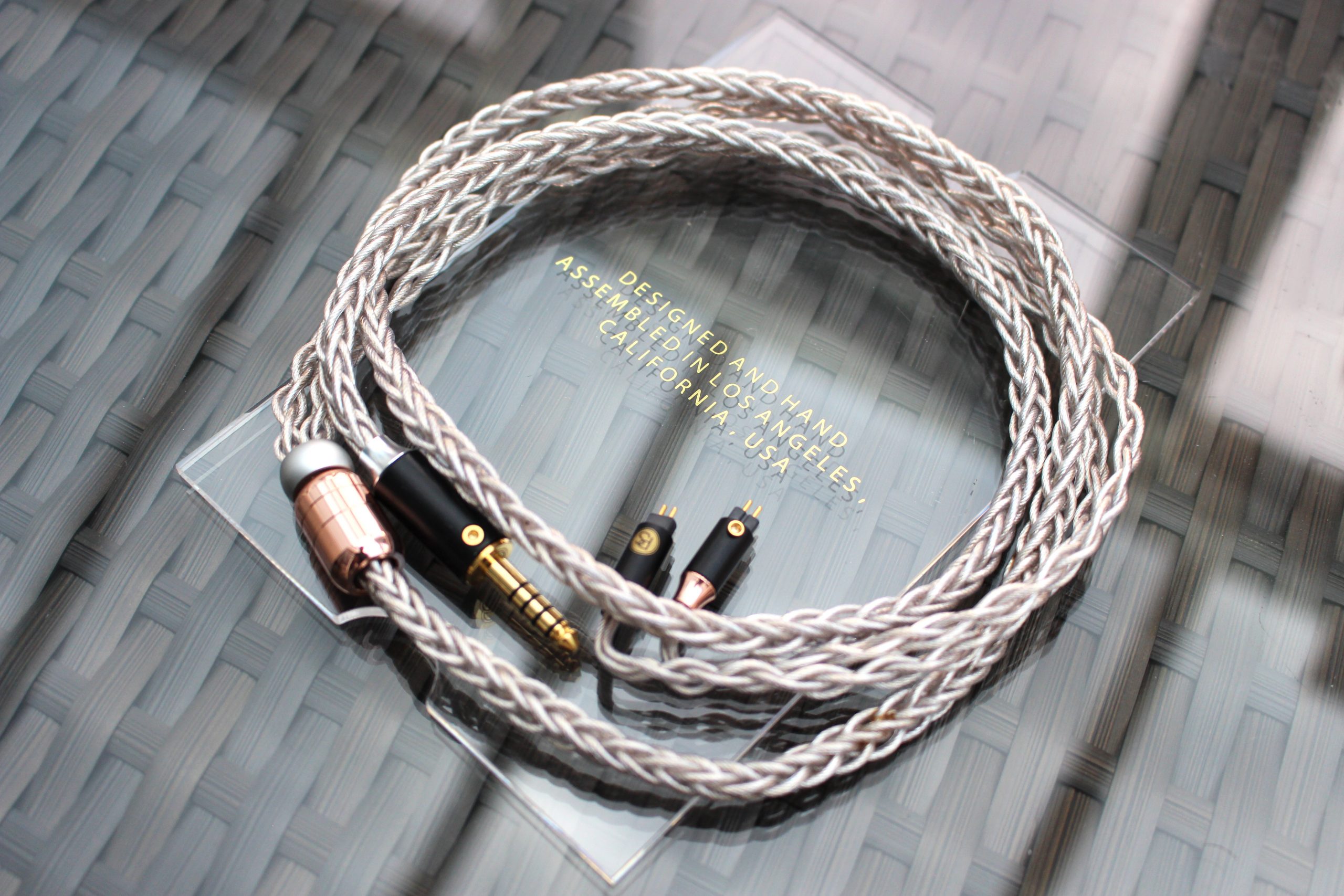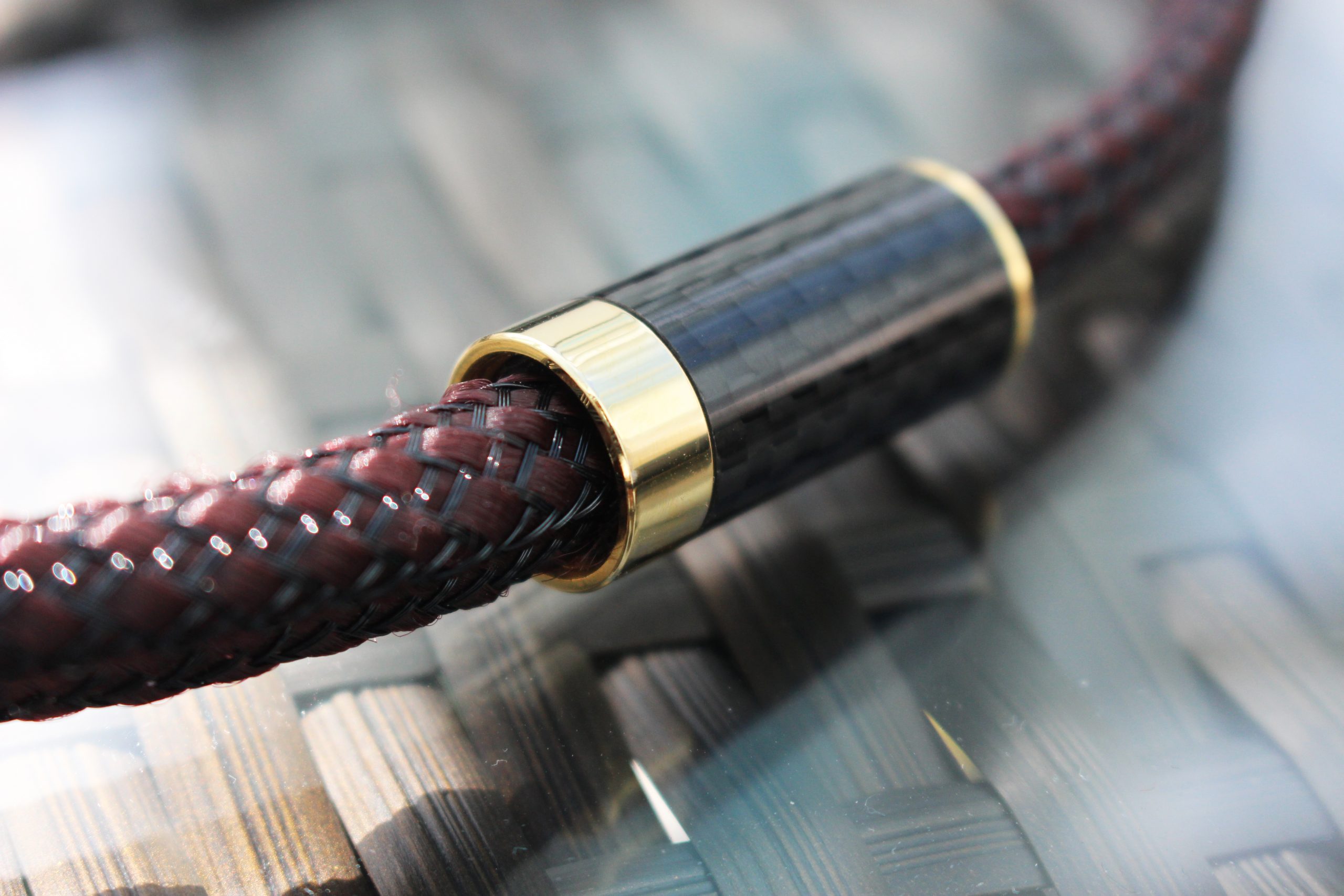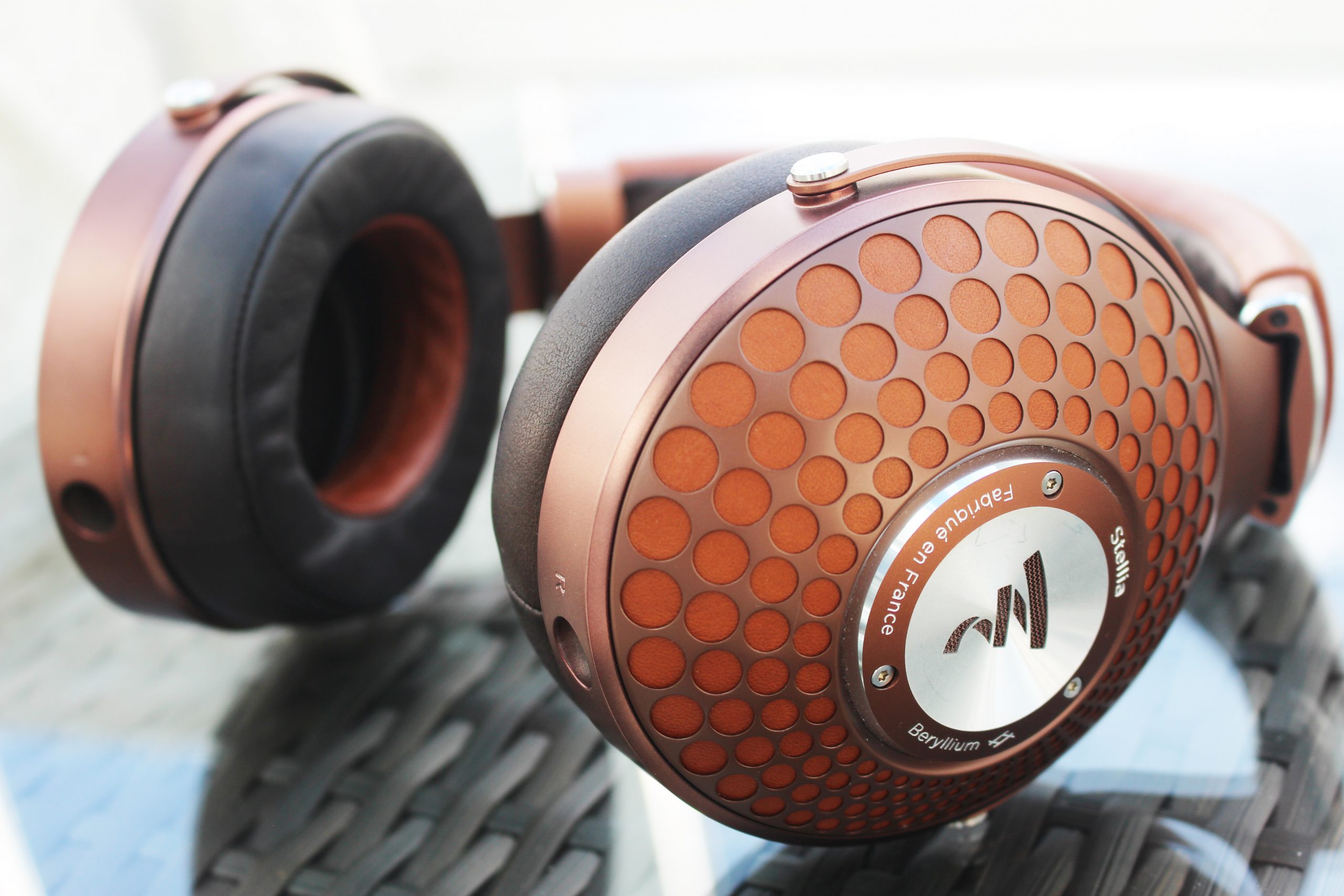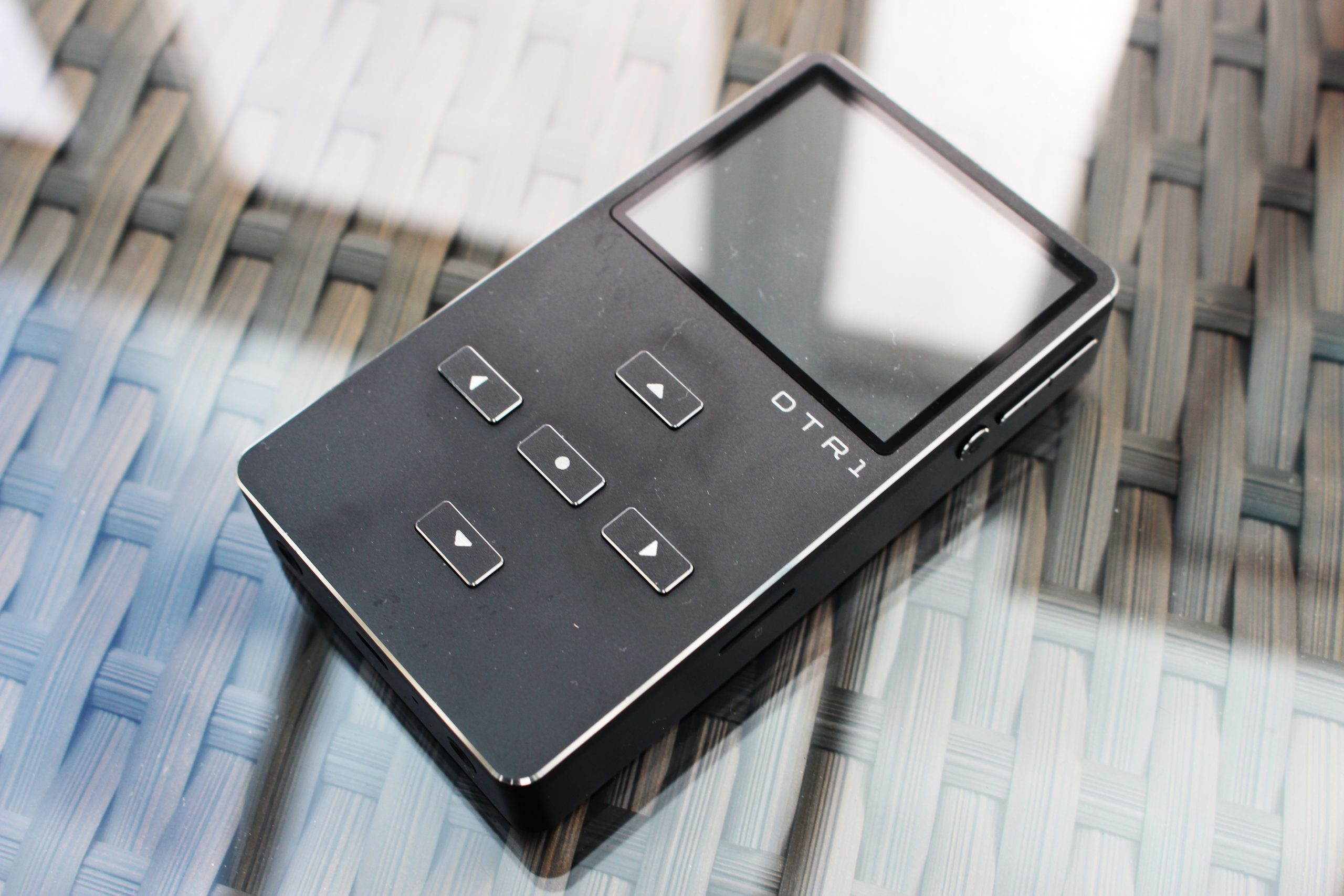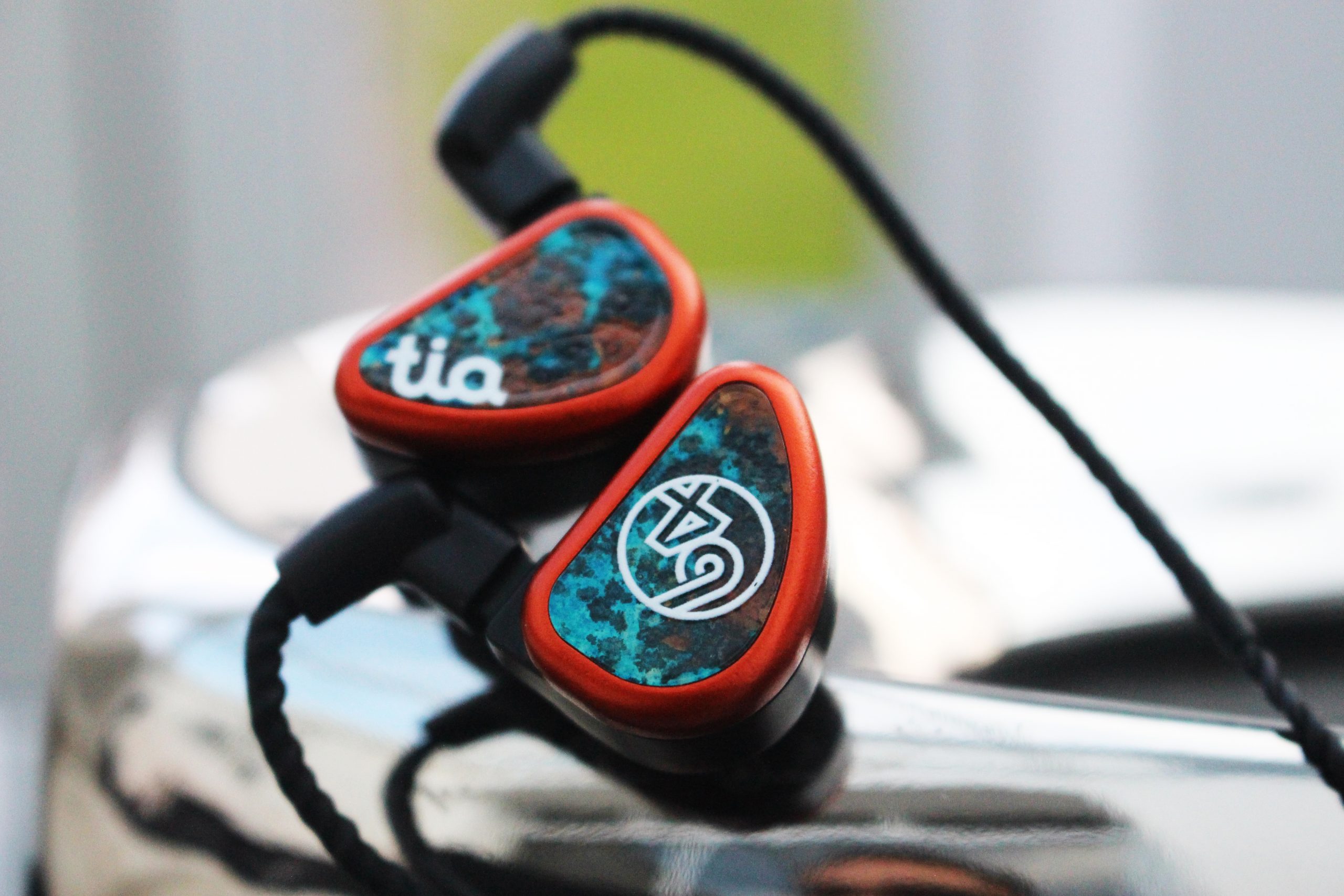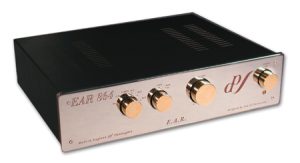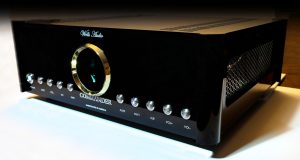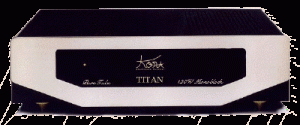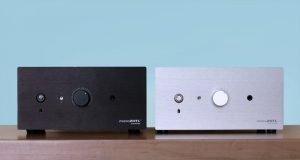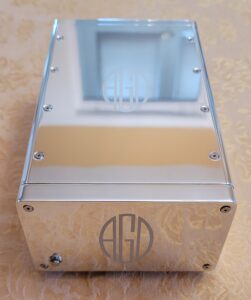With a strong pride for American-built products, Schiit are the company behind some of the best value for money propositions in the amplifier and DAC market. Their playful style and thematic nomenclature have helped entice a wealth of consumers into the entry-level market, earning them many accolades from across the globe.
The Schiit Vidar is an example of one of their high-end power amplifiers, retailing for an affordable $700. With this amp, users get class A/B amplification with a dual mono design that outputs 100W into 8 Ohms or 200W into 4 ohms.
Box and design
The Schiit products come well packaged in a large cardboard box. As with all Schiit products, the white cardboard features minimal packaging which exudes class and sophistication. The stack comes with each of their respective power cords (UK, US, Australian or Euro). Also included is a user manual and 5 year warranty—consumers have to purchase separate speaker wires.
Build & Features
The Schiit Vidar follows an industrial design with solid construction. The heatsink disrupts the uniform aluminum chassis, giving it a more aggressive look. The amp has a small footprint with dimensions of 13 x 9 x 3.9 inches allowing it to fit into more compact set-ups. Users have the option to also choose from silver or black designs.
Front
On the front, Schiit have embossed the Vidar name in their very own font styling. There is a singular LED operation indicator surrounded either side by a rectangular slab of heatsinks. Unlike the Freya plus, this is not a fully screw-free design, which does make it stand out more as an industrial looking device. Either side, the heatsinks continue in a fan slit design that reduces noise, but allows the amp to cool down without the need for its own active cooling system.
Rear
On the rear of the device, there are a variety of inputs and outputs. These include a balanced 3-pin XLR input, two RCA inputs, and a port for the power-cord. There are also stereo speaker outputs with the on/off switch being located centrally.
Internals & Power Supply
The implementation of the class A/B amplifier provides the Vidar with an efficient and less distorted sound compared to class D counterparts. The power output is more than adequate, and allows users to use them dual mono configurations where each amplifier drives a single speaker. While there is no active cooling system, the use of large fans either side, as well as the front facing vents, allow for passive cooling and thermo-regulation of internal components. This is aided by an active protection circuit that prevents excessive current draw to allow for smooth operation.
Set-up and operation
Depending on either mono mode or stereo configuration, users can configure one speaker to one amplifier or two speakers to one amplifier. For the purposes of this review, the set-up is stereo mode where the preamplifier was Schiit's Freya.
Sound quality
The Vidar adopts a neutral and lively presentation that helps to draw out some strengths of both floor standing and bookshelf speaker designs. Starting from the bass, there are great levels of control and drive without artificial bloat or decay. Midrange frequencies are supported with good levels of technicalities and some bite to leading transients. This extends to the higher frequency spectrum, which is allowed to breathe without an overly smooth characterization of sound. Owing to the lower frequencies, some warmth is worked into the overall signature, while there are good levels of detail and technicalities up top. This is not a fluid presentation, and some may describe the sound as slightly dry—however, the Vidar capably drives speakers with adequate power. As a result, the amplifier boasts fantastic layering and depth, albeit not the largest of soundstage. It would be interesting to see how the dual mono configuration may aid in this department.
Compared to the Marantz MM7055, which is significantly more expensive, the Vidar offers a more natural sound with better control in the lower frequencies. Similarly, compared to the more budget Onkyo A-9110, the Vidar was able to draw out more details with more authority and speed. The Vidar paired well with Schiit's very own Freya + preamplifier that was used to drive SVS Prime Speakers, as well as Elac's Uni-Fi UB5 Slim.
Owing to the powerful nature of this dedicated speaker amp, the Vidar capably drives the most inefficient of speakers. This is even more evident if two amps are being used to drive speakers separately. Hence, consumers should be wary when using ultra-efficient speakers (especially those rated less than 4 ohms) as the Vidar may run into its protection and switch off. An admirable trait is that under relatively high loads, the Vidar maintains a level-head without distorting and losing control. Yes, the treble does have an element of forwardness and "etch," but music is portrayed with relatively more definition and sparkle. Macro-dynamics seemingly stand out with the amp, which contribute to its lively and authoritative tonality. While this amplifier does not deliver the last word as far as micro-dynamic technicalities are concerned, it certainly offers a lot for what it is worth.
Conclusion
Schiit have stayed true to their philosophy with the Vidar here in that you certainly get bang for your buck. At $700, the amplifier runs circles around adversaries costing significantly higher, and does so in a friendly, compact, and expandable form factor. Bass capabilities really stand out with this amplifier in particular, and set the tone for what a capable performance it truly brings out. The Schiit Vidar marries well with plenty of speaker types, and offers alongside it great technicalities and detail while retaining Schiit's organic house sound. Stay tuned for more...
Specifications
- Power Output: Stereo, 8 Ohms: 100W RMS per channel, Stereo, 4 Ohms: 200W RMS per channel, Mono, 8 ohms: 400W RMS
- Frequency Response: 20Hz-20Khz, -0.1db, 3Hz-500KHz, -3dB
- THD: <0.01%, 20Hz-20KHz, at 100W RMS into 8 ohms
- IMD: <0.01%, CCIR, at 100W RMS into 8 ohms
- SNR: >115db, A-weighted, referenced to full output
- Topology: Fully complementary, all-BJT, current feedback, no coupling capacitors or DC servos
- Power Supply: 600VA transformer with dual mono main rails, plus boosted, regulated supply to input, voltage gain and driver stages, plus separate, isolated and regulated rails for microprocessor management.
Vidar Power Amplifier
Retail: $700
Schiit Audio




